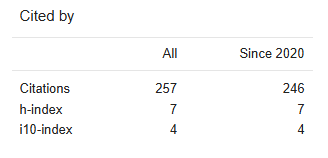Paper Details


Call For Papers
Volume 06, Issue 12
Frequency: 12 Issue per year
Paper Submission: Throughout the Month
Acceptance Notification: Within 2 days
Areas Covered: Multidisciplinary
Accepted Language: Multiple Languages
Journal Type: Online (e-Journal)
Announcement

Publish books with ISBN Number
- Edited Book
- Text Book
- Ph.D Thesis
- Conference Proceedings
ISSN Number:
2582-8568
Journal DOI No:
03.2021-11278686
Title:
Legacy of the Delhi Sultanate: Cultural Flourishment and Administrative Innovation
Authors:
Cite this Article:
,
Legacy of the Delhi Sultanate: Cultural Flourishment and Administrative Innovation, International Research Journal of Humanities and Interdisciplinary Studies (www.irjhis.com), ISSN : 2582-8568, Volume: 5, Issue: 4, Year: April 2024, Page No : 108-113,
Available at : http://irjhis.com/paper/IRJHIS2404012.pdf
Abstract:
The Delhi Sultanate, traversing from 1206 to 1526, left a significant effect on the Indian subcontinent, denoting the conventional start of Muslim rule in the district. It shaped India's history by introducing novel administrative systems like the Iqta framework and Persian culture, language, and Islamic art. This era was started by the Slave Dynasty, which promoted Persian culture and Indo-Islamic architecture. This pattern was continued by the Khalji Dynasty, which centralized power and implemented land revenue reforms while encouraging artistic and architectural advancements. Despite difficulties, the Tughlaq Dynasty promoted Indo-Islamic culture and made bold administrative changes. The Lodi Dynasty emphasized cultural and administrative advancements, securing Indo-Islamic art and governance, while the Sayyid Dynasty maintained cultural patronage amid political instability. The Delhi Sultanate's effect was significant, mixing Persian, Indian, and Islamic practices into a novel social union that characterized the locale's personality for a really long time.
Keywords:
Iqta, Persian Culture, Siri, Qawwali, Sufism, Islamic Art
Publication Details:
Published Paper ID: IRJHIS2404012
Registration ID: 21388
Published In: Volume: 5, Issue: 4, Year: April 2024
Page No: 108-113
ISSN Number: 2582-8568
Download Full Paper: Click Here
Article Preview:





